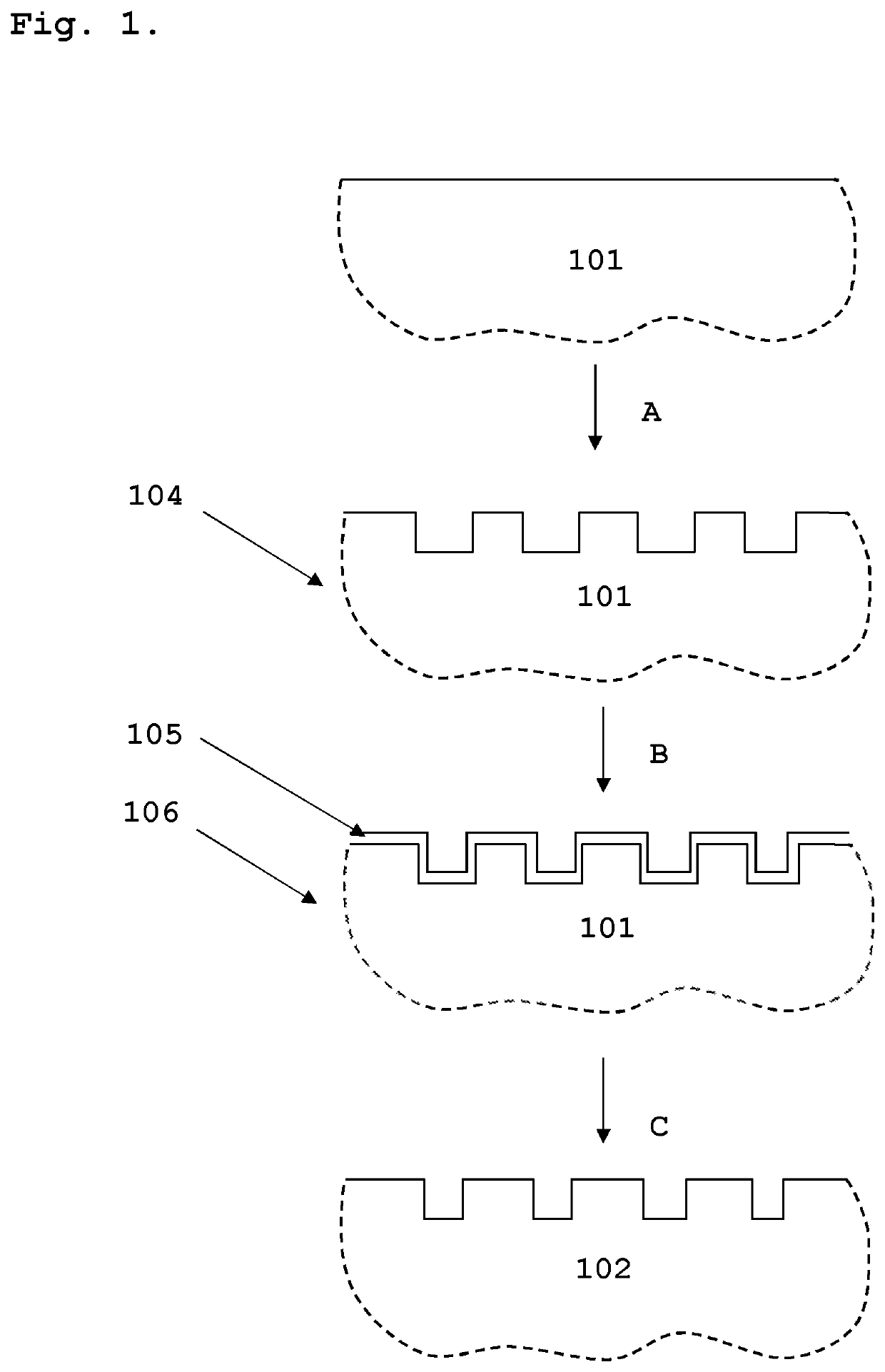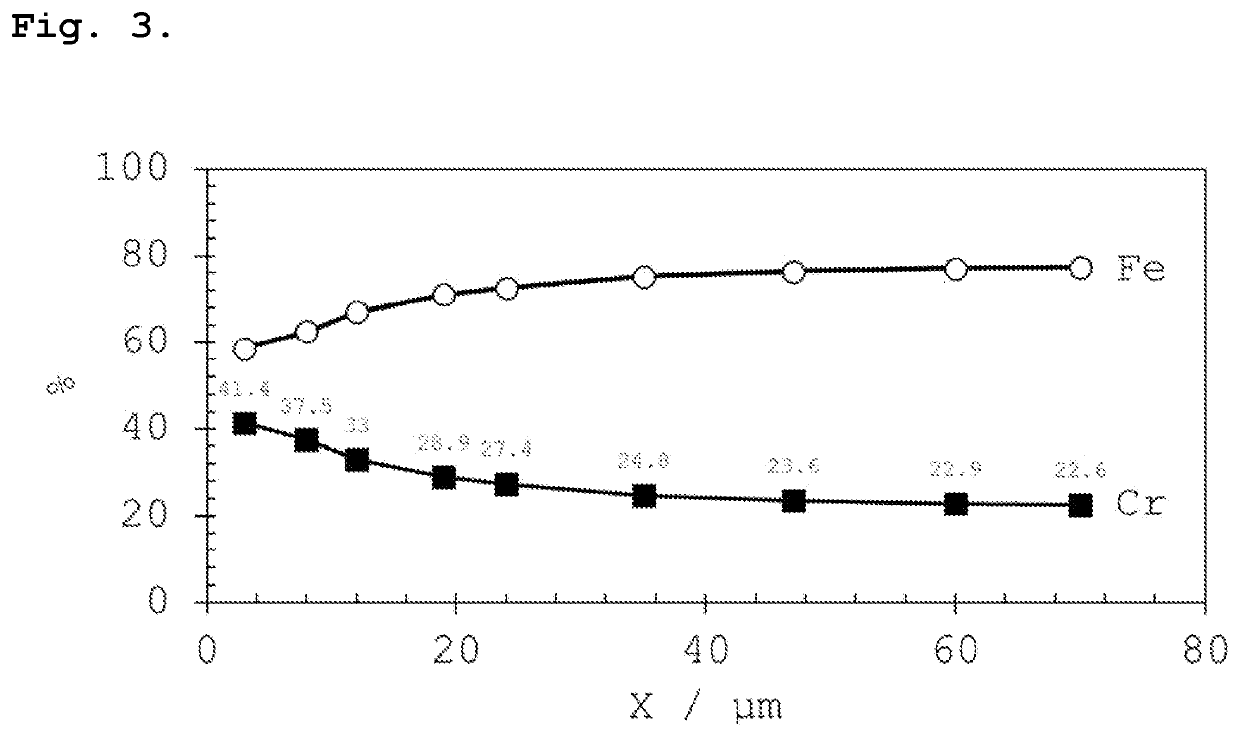A method for chromium upgrading of ferritic steel interconnects for solid oxide cell stack applications
- Summary
- Abstract
- Description
- Claims
- Application Information
AI Technical Summary
Benefits of technology
Problems solved by technology
Method used
Image
Examples
Example
DETAILED DESCRIPTION OF THE DRAWINGS
[0064]FIG. 1 illustrates one possible embodiment of the invention. Ferritic stainless steel (101) is first shaped (process A) into a shaped SOC interconnect (104). Thereafter, a coating comprising Cr (105) is deposited by hard chromium plating (process B) on at least one surface of the shaped interconnect (104), whereby a coated SOC interconnect (106) is obtained. Then, one or more thermal treatments (process C) are performed at temperatures below 1000° C., whereby a chromium-upgraded SOC interconnect (102) is obtained. The resulting Cr concentration near the surface of the chromium-upgraded interconnect (102) is higher than the Cr concentration in the ferritic steel before shaping (101).
[0065]FIG. 2 illustrates one possible embodiment of the invention. Ferritic stainless steel (101) is first shaped (process A) into a shaped SOC interconnect (104). Thereafter, a coating comprising Cr (107) is deposited by a chromizing process (process D) on at lea...
PUM
| Property | Measurement | Unit |
|---|---|---|
| Temperature | aaaaa | aaaaa |
| Thickness | aaaaa | aaaaa |
| Thickness | aaaaa | aaaaa |
Abstract
Description
Claims
Application Information
 Login to View More
Login to View More - Generate Ideas
- Intellectual Property
- Life Sciences
- Materials
- Tech Scout
- Unparalleled Data Quality
- Higher Quality Content
- 60% Fewer Hallucinations
Browse by: Latest US Patents, China's latest patents, Technical Efficacy Thesaurus, Application Domain, Technology Topic, Popular Technical Reports.
© 2025 PatSnap. All rights reserved.Legal|Privacy policy|Modern Slavery Act Transparency Statement|Sitemap|About US| Contact US: help@patsnap.com



